Our child care programs, summer camp, and forest school are child-centered and inquiry based.
By Christine Tyrrell, Communications and Marketing Coordinator
I am someone who questions everything, including myself. I took the first step of my parenting journey when I asked myself whether I should even become a parent; a lot of consideration went into it. Knowing my husband would be a great parent and support, I still doubted myself. When we finally did take that step and become parents, we felt very grateful, but it also felt like a big responsibility. We had to consider our parenting style. Fortunately, our style was aligned.
I think parenting is like anything that must be learned and practiced; like learning to drive. However, unlike driving there isn’t a mandatory test before they let you start parenting, so one might wonder “am I doing this right?”. There are so many things to navigate as a parent, including what philosophy and approach to take in raising a child that it’s easy to feel overwhelmed, especially with the amount of information available and social media. So, I’m always looking for advice that is “quality over quantity”.
Upper Canada Child Care (UCCC) is one of those quality resources for me. They readily share best practices, and the purpose behind them; that’s made my parenting journey easier and more rewarding. Here are my top 10 things that I’ve learned from working in childcare, which helped me hone my parenting style:
1. KNOW THAT PLAY IS LEARNING.
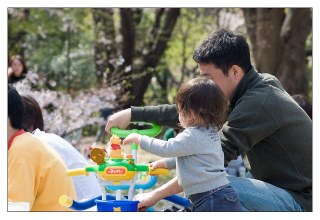
As a parent, I draw on my experience in Upper Canada Child Care’s play-based programs. UCCC educators are professionals who understand early childhood development. They facilitate learning through play, which includes unscheduled free play time, outdoor time, and “risky play” (more on that later).
UCCC taught me the importance of paying attention to my child’s interests and looking for connections and opportunities to build on learning.
2. PUT CONNECTION BEFORE CORRECTION.
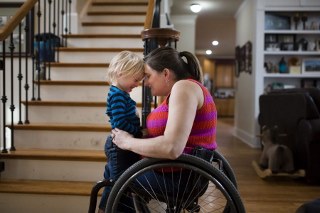
To be honest, years ago when I first started working as an assistant in a childcare preschool room, I was a bit surprised by some of the approaches to child guidance. It was the first time I’d heard the term “connection before correction”. And no time outs?
I wasn’t yet a parent, but I knew that lots of people used time outs with their children. I’d seen tv shows like “Supernanny,” where timeouts are given, corresponding to a child’s age (e.g. 3 minutes for a 3-year-old). Before working in childcare, I wouldn’t have believed it if someone had told me that in the future, my household would never use time outs.
But here we are seven years into parenting, and that’s been the case. Instead of a time out, I learned from UCCC the idea of more of a “time IN”. Unlike a time out where a child is on their own, expected to stay in one place, not necessarily understanding why they are there, and not being able to talk through their feelings, we choose instead to connect with children, listen, and model self-regulation. I’m glad I learned connection before correction. It really works.

3. PRIORITIZE SELF-REGULATION AND CO-REGULATION.
I recall a day when I was walking home from the park with my then-toddler. Both of us were crying. Although I had learned from UCCC that I shouldn’t get into a power struggle with a child, in this moment I was dysregulated. Likely one or both of us was tired, hungry, or maybe I was feeling time pressure.
 Though my mantra during these years was “I don’t want a compliant child, I don’t want a compliant child”, in that moment I admit I kind of wanted a compliant child. Whatever the reason, we both needed to regulate. As the adult it was my job to take care of my own self-regulation so I could co-regulate with my child.
Though my mantra during these years was “I don’t want a compliant child, I don’t want a compliant child”, in that moment I admit I kind of wanted a compliant child. Whatever the reason, we both needed to regulate. As the adult it was my job to take care of my own self-regulation so I could co-regulate with my child.
During those years, I attended an Upper Canada Child Care conference where the topic was self-regulation, presented by Dr. Stuart Shanker and Dr. Susan Hopkins of the MEHRIT Centre. Though I don’t know exactly what I said to one of the speakers afterwards, I remember the feeling: I was struggling. I was exhausted. I was seeking reassurance that I would get through this time.
From Stressed to Self-Regulation
Since that conference, I’ve referenced and recommended to others Dr. Shanker’s book “Self-Reg: How to Help Your Child (and You) Break the Stress Cycle and Successfully Engage with Life” and resources found at The MEHRIT Centre Home – Shanker Self-Reg ®. Understanding self-regulation was an important milestone in establishing my parenting style.
I’ve learned that all behaviour is communicating something. We can consider what a child’s behaviour is trying to communicate, and why a behaviour might be happening: are needs/interests not being met? Are they feeling anxious, frustrated, sad, tired, hungry, or bored? As adults we can learn to respond accordingly and effectively to support children. We can help children to name their feelings, then listen, and show empathy.
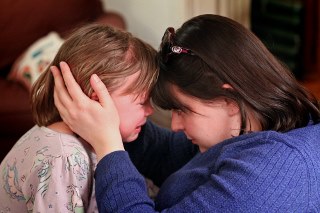 These days in our home, everyone’s self-regulation is supported through:
These days in our home, everyone’s self-regulation is supported through:
- Communicating clearly
- Listening, sharing, and validating feelings
- Understanding everyone’s needs and trying to meet these needs
- Doing things that help us be calm and present (like simplifying and not over-scheduling)
- Offering help, a hug, and/or space
- Eating healthy meals and snacks together
- Exercising and going for walks
- Prioritizing sleep and taking naps when needed

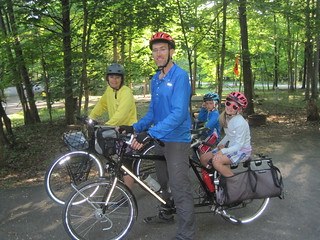
Here are a few phrases borrowed from UCCC’s Inclusion Team to help children find their sense of calm: Phrases to Help a Child Find Their Sense of Calm – YouTube
4. GIVE POSITIVE ATTENTION.
All children need attention. They need to be seen. If the only attention a child can get is ‘negative attention’, they’ll seek it out; negative attention beats no attention at all. Child development professionals agree that parenting styles that focus only a strict enforcement of rules without emotional connection can lead to negative outcomes for children: Negative Parenting Styles: Signs and Effects on Kids | Psych Central.
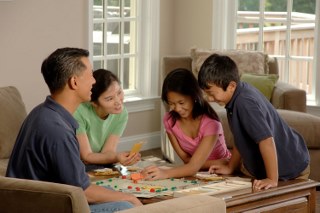
When I was working in the centre I was encouraged to ‘catch (notice) children doing good’ and give positive attention as much as possible.
I’ve found that by focusing more on looking for the positive first, that I find more of it. I see children light up when we take this approach.
5. PREPARE FOR TRANSITIONS.
Have you ever picked up your child from childcare or any other activity and had a hard time getting them to leave? It’s very common and what I witnessed while working in childcare prepared me for how I handle this transition today.
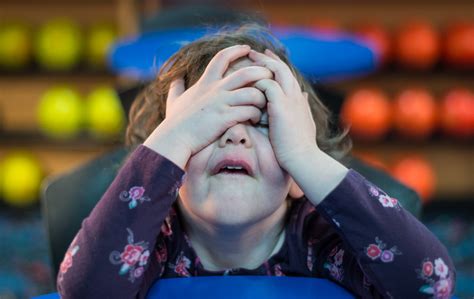
Imagine if YOU were engrossed in an activity and then someone arrived at your door and said: “Come on, let’s go!” with no inquiry about what you were doing before they arrived. And then got frustrated when you didn’t immediately stop what you were doing, leap up, and then go with them; how would it make you feel?
When we know and expect that transitions between spaces and activities may be difficult for children, we can do things to make transitions go more smoothly, such as:
- showing interest and acknowledging what children are doing “e.g., I’m glad you are having fun, I understand that you don’t want to leave.”
- giving a heads up in advance of a transition e.g. “We need to go in 10 more minutes” then, “5 more minutes to go.”
- intentionally minimizing the number of transitions in a day as much as possible

6. LOOK FOR TEACHABLE MOMENTS.
I love the collaboration that happens at UCCC. While writing this blog, I was reminded recently by my colleague that every moment is a teachable moment, no matter how small.
For example, we may think sometimes that kids can read our minds because we’ve gone to the grocery store 250 times before. Except that isn’t true, and their young and still developing minds may not remember that they need to ride in the seat in the shopping cart, and they can’t stand inside the buggy, because that is where the groceries go etc. – these are ‘teachable moments’. 
Instead of being frustrated with children not knowing exactly what we want them to do, our parenting style can incorporate a learning mindset. Try setting up for success by communicating expectations in advance. In my experience, when we ask children what they think the expectations are, they usually know and will appreciate being asked.
Likewise, a transition isn’t just something to get through: maybe children are working on skills such as getting dressed on their own, or taking turns, washing their hands, or toileting prior to going outside. It’s no surprise that these types of moments are rife with big feelings and frustrations that come along with learning a new skill.
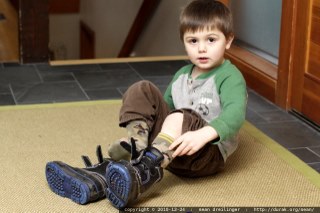
If adults can learn to anticipate and look forward to those ‘teachable moments’ as an opportunity to learn or develop, we can ALL practice self-regulation and support children while they are putting on their own shoes and jacket, for example… no matter how long it takes.
Top tip: factor in extra time for these transitions where possible!
7. EMBRACE RISKY PLAY. IT BUILDS RESILIENCE.
UCCC has helped me be more comfortable with outdoor and reasonable risky play. As adults we are often scanning for risk; it’s a big part of our job. But if that’s ALL we’re doing, we’re missing out on so many moments.
When children only hear “Why aren’t your wearing your coat?! or “Don’t do that!”, they’ll likely tune out and / or it turns into a power struggle. Again, it helps to think how this would make US feel.
Basically, it’s about having empathy and respect for children.
Now, instead of overly limiting risky play, or cutting it off completely, my parenting style has evolved, and I’ve learned that I can display trust by involving my child in the process of risk assessment and creating boundaries. I believe that when we actively show we trust children, and when we are present and attentive without holding on too tightly to control, and when we go back to the idea of connection before correction, children usually make good decisions.

UCCC has also reinforced my understanding that I need to push myself out of my comfort zone. This idea helps me to reflect on my decisions. I ask myself, more often, why I am saying “no”. That process helps me to accept that letting her climb trees or piles of snow for example, supports her self-confidence and reinforces her ability to makes good decisions. She also understands safety and more readily accepts limits because she has been able to participate in assessing risk and setting boundaries.

It’s not about giving up our control entirely; it’s about showing her that we trust her.
At UCCC we know, as this article Pop the bubble wrap and let kids play outdoors, pediatricians say | CBC News suggests, that it’s more helpful and empowering to ask children things such as: “Do you see how high you are?” “Are you feeling scared/excited/safe?”
For more on this topic see: Rough and Tumble Play, Yay or Nay? – Upper Canada Child Care
8. FOCUS ON PROCESS OVER PRODUCT.
When I first worked with preschoolers, I was somewhat surprised to learn that rather than be directive or prescriptive in showing/telling them how to use materials, we provide children with open-ended art materials and ‘loose parts’, letting them explore. When I was growing up, it seemed like there was more emphasis on the doing things ‘properly’, on colouring within the lines.
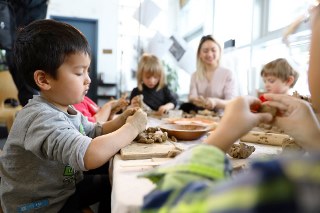
Working in childcare has helped me become more comfortable with the notion of ‘process over product’. That is, the process matters just as much if not more than the result. As a parent, letting my child explore and express her creativity freely has allowed it to flourish. She is a prolific artist, an enthusiastic and confident performer, and it is a joy to watch her.
My parenting style is to try to put more emphasis on effort than outcome.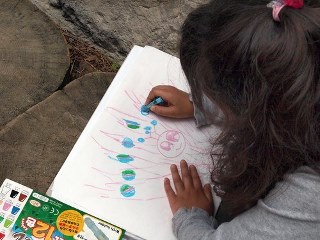 When speaking with our child and other children, instead of just saying “that looks good” I now try to foster effort, perseverance, independence, resilience, and self-esteem by saying things like “I noticed how hard you worked on that!”
When speaking with our child and other children, instead of just saying “that looks good” I now try to foster effort, perseverance, independence, resilience, and self-esteem by saying things like “I noticed how hard you worked on that!”
I also try to ask more open-ended questions and to leave more space for the answer (working on this!).

9. TRY TO RELAX AROUND MEALTIMES.
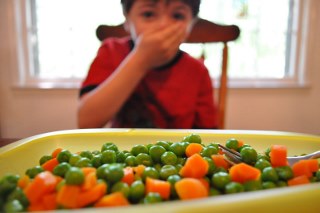
As someone who loves to eat, is not very “picky”, and who has always eaten everything on my plate, this one can be challenging.

But I’ve learned that my job as a parent is to offer a variety of healthy options and that it’s a child’s job to decide how much and what to eat. (I do recognize that we are not in a situation of food insecurity and how privileged I am to be writing this.).

It’s well known that mealtimes can be a point of tension for families, and we have two previous blogs written by Novella Lui, Registered Dietician to share again.
READ: How Responsive Feeding Helps Children – Upper Canada Child Care
READ: 7 Tips for Fuss-free Mealtimes – Upper Canada Child Care.
10. STRIVE FOR PROGRESS, NOT PERFECTION.
I’m prone to perfectionism, so I need to remind myself that there is no such thing as perfect.

Even if we tried to master the art of parenting in one moment, parenting isn’t static. Each child is unique, and children are constantly growing and changing (hopefully our parenting style grows and changes along with them). I’ve learned that simply asking whether we’re doing a decent job likely indicates we’re doing better on this parenting journey than we think. Then, when we inevitably do get it ‘wrong’ from time to time, if we acknowledge it, apologize, and try again – in other words if we are vulnerable and humble – this goes a long way with children. 
I’m so thankful that I work in an environment focused on early childhood education, where we practice reflection.
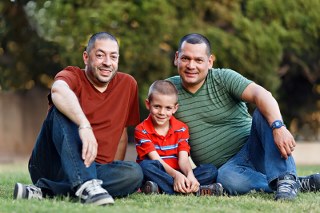
Lastly, I strive for progress in mindfulness and my attitude. Parenting goes more smoothly when I start from a place of gratitude and see this experience of parenting as a privilege, and when I expect and welcome the fact that effort is involved.
Like everything, parenting is a practice.